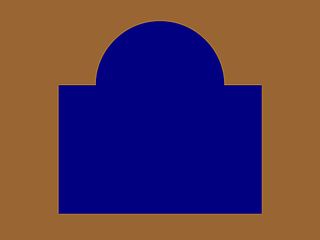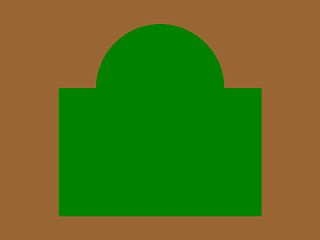The Mississauga Horse was a cavalry regiment of the Non-Permanent Active Militia of the Canadian Militia. In 1936, they were amalgamated with The Governor General's Body Guard to form The Governor General's Horse Guards.

The Governor General's Horse Guards is an armoured cavalry regiment in the Primary Reserve of the Canadian Army. The regiment is part of 4th Canadian Division's 32 Canadian Brigade Group and is based in Toronto, Ontario. It is the most senior reserve regiment in Canada, and the only household cavalry regiment of Canada's three household units.

The 12th Manitoba Dragoons is an armoured regiment of the Canadian Army that is currently on the Supplementary Order of Battle.

The 19th Alberta Dragoons was a cavalry regiment and later an armoured regiment of the Canadian Militia and later the Canadian Army. It was placed on the Supplementary Order of Battle in 1965. In 2006, it was taken off the Supplementary Order of Battle and amalgamated with the South Alberta Light Horse.
The 27th Battalion, CEF was an infantry battalion of the Canadian Expeditionary Force during the First World War. The battalion was authorized on 7 November 1914 and embarked for Great Britain on 17 May 1915. It disembarked in France on 18 September 1915, where it fought as part of the 6th Infantry Brigade, 2nd Canadian Division in France and Flanders until the end of the war. The battalion was disbanded on 15 September 1920.

The 29th Battalion (Vancouver), CEF was an infantry battalion of the Canadian Expeditionary Force during the Great War.
The 1st Battalion, Canadian Mounted Rifles, CEF, was an infantry battalion of the Canadian Army. Raised for service during the First World War as part of the Canadian Expeditionary Force (CEF), it was formed in November 1914, in Brandon, Manitoba. Originally a mounted infantry unit named the 1st Regiment, Canadian Mounted Rifles, CEF, which was expanded, following its rerolling and dismounting as an infantry unit, by absorbing other units of the Canadian Mounted Rifles (CMR).

The 2nd Canadian Mounted Rifles Battalion, was authorized on 7 November 1914 as the 2nd Regiment, Canadian Mounted Rifles, CEF. The battalion recruited in Victoria and Vernon, British Columbia and was mobilized in Victoria. An earlier incarnation was raised for Boer War.
The 18th Battalion, CEF, was an infantry battalion of the Canadian Expeditionary Force in the Great War.

The 21st Battalion, CEF was an infantry battalion of the Canadian Expeditionary Force in the Great War.

The 24th Battalion, CEF, was an infantry battalion of the Canadian Expeditionary Force during World War I.

The 26th Battalion CEF, was an infantry battalion of the Canadian Expeditionary Force during World War I. The 26th Battalion recruited throughout New Brunswick and was mobilized at Saint John, New Brunswick. The 26th Battalion, CEF, is perpetuated by The Royal New Brunswick Regiment.

The 28th Battalion (Northwest), CEF was an infantry battalion of the Canadian Expeditionary Force during the Great War.

The 8th Battalion, CEF, also known by the nickname of The Little Black Devils of Canada, was an infantry battalion of the Canadian Expeditionary Force during the Great War. The battalion was authorized on 10 August 1914 and embarked for Great Britain on 1 October 1914. It disembarked in France on 13 February 1915, where it fought as part of the 2nd Canadian Brigade, 1st Canadian Division in France and Flanders until the end of the war. The battalion was disbanded on 15 September 1920.

The 44th Battalion (Manitoba), CEF, was an infantry battalion of the Canadian Expeditionary Force during World War I.

The 46th Battalion, CEF, was an infantry battalion of the Canadian Expeditionary Force during the Great War.

The 47th Battalion, CEF, was an infantry battalion of the Canadian Expeditionary Force during the Great War.

The 52nd Battalion, CEF, was an infantry battalion of the Canadian Expeditionary Force during the Great War.
The 15th Battalion, CEF was an infantry battalion of the Canadian Expeditionary Force during World War I. The 15th Battalion was authorized on 1 September 1914, embarked for Britain on 26 September 1914, and arrived in France on 15 February 1915. The battalion fought as part of the 3rd Canadian Brigade, 1st Canadian Division in France and Flanders throughout the war. The battalion was disbanded on 30 August 1920.
The Princess Louise Dragoon Guards was a heavy cavalry regiment of the Non-Permanent Active Militia of the Canadian Militia. First formed in 1872 as an independent cavalry troop, in 1903 it became a full regiment. In 1936, the regiment was amalgamated with the 4th Hussars of Canada to become the 4th Princess Louise Dragoon Guards.














